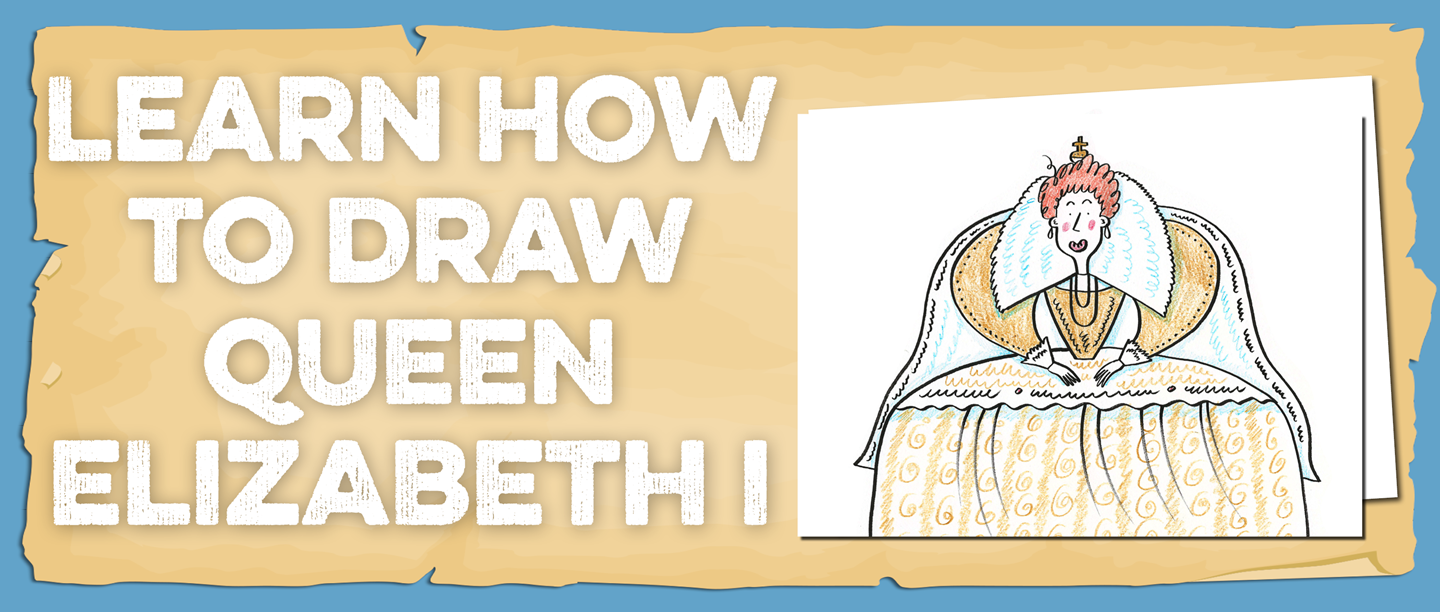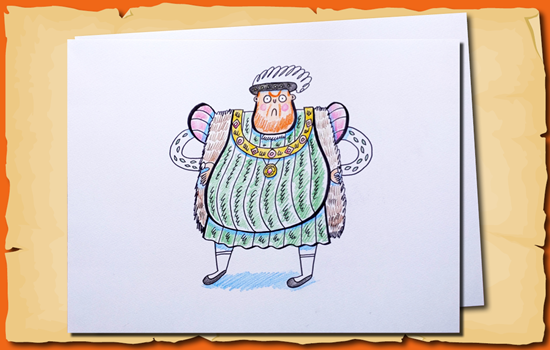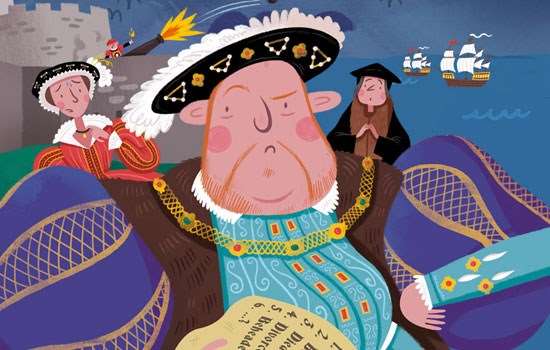Kids Rule! Elizabeth I draw-along art tutorial
Learn to draw Elizabeth I with Kids Rule! magazine illustrator Wesley Robins! Have a piece of paper and a pen or pencil ready, and draw along with Wesley, as he shows you step-by-step how to portray this famous Tudor queen. Then, add your own finishing touches using coloured pencils, pens or paints.
We'd love to see your finished artwork and we'll share our favourites in a gallery on this page. Make sure you have your parent or guardian's permission to email it to us at members.magazine@english-heritage.org.uk, along with your name and age.
About Elizabeth I
- Born: 7 September 1533 at Greenwich Palace
- Parents: Henry VIII and Anne Boleyn
- Became queen: 17 November 1558
- Reigned: 44 years and 4 months
- Died: 24 March 1603 at Richmond Palace
- Successor: James I of England and VI of Scotland (Elizabeth I's cousin)
Elizabeth’s mother Anne Boleyn was executed by her father Henry VIII when Elizabeth was only 2 years old. After this, Henry VIII declared Elizabeth to be illegitimate (meaning she could not inherit the throne). Growing up, she would not have expected to become queen.
Despite this, Elizabeth had an excellent education. She was very intelligent and could speak or read at least seven languages – English, Welsh, Greek, Latin, Spanish, French, and Italian. Phew!
Ruling and religion
When Elizabeth’s brother Edward VI was king, England’s official religion was Protestantism, following the new Church of England set up by Henry VIII. Elizabeth’s sister Mary I became queen after Edward died, and she changed it to Catholicism. During her reign, many people were executed for refusing to change their religion to match the queen’s.
Elizabeth I was a protestant like her brother, so when she inherited the throne after the death of her sister Mary, she changed the religion back to the Church of England. All of these changes were very stressful for people, who could be executed for following the wrong religion. While Elizabeth I was queen, Catholic priests were thought to be dangerous to the queen’s rule, so they were arrested and put into prison. Some people who followed the Catholic religion helped priests to hide in their homes using very small secret rooms hidden behind walls and under floors, called priest holes. You can see two examples of these at Boscobel House, in Shropshire.
The virgin queen
After becoming queen, Elizabeth was advised by her council to get married. In the Tudor period, many people believed that a woman could not be queen and rule the country on her own without help – but Elizabeth would prove them wrong!
Elizabeth I was famous for never getting married. Because of this, she was known as the Virgin Queen, and declared that she was instead married to England. In a time when women had to obey their husbands, not being married meant Elizabeth could keep all of her power as queen, and this became an important part of Elizabeth’s image.
She received lots of proposals though, including from the king of Spain, who had been Elizabeth’s sister Mary I’s husband!
Great exploration
Travel and trade by sea was increasing and during Elizabeth’s rule, England became extremely wealthy and important around the world. Explorers including Sir Francis Drake and Sir Walter Raleigh discovered new lands and brought home treasure and new foods to try – including potatoes, which were brand new to Europe! At the same time, William Shakespeare (pictured) was creating the plays that would make him the most well-known playwright in history.
However, there were other countries who also wanted to make money from new goods and trade, so defending the country’s shores was an important task that Elizabeth needed to do well.
All at sea
In 1588, a fleet of Spanish ships (now called the Spanish Armada) sailed to England to try to invade. Elizabeth was determined that they wouldn’t succeed, so she visited the military camp at Tilbury where her troops were preparing to fight and gave a speech to rally support. A famous quote from this speech reads:
‘I may have the body of a weak and feeble woman, but I have the heart and stomach of a King, and of a King of England too’
By travelling there in person, Elizabeth showed strong leadership and she gained lots of support from the men, who were inspired by her speech. The English navy were outnumbered by the Spanish, but thanks to long-range guns, better ships, clever plans and some very bad weather, England was successfully defended against the Spanish Armada.
Elizabeth and Dudley
On 9 July 1575, a huge party was held at Kenilworth Castle in Warwickshire for Queen Elizabeth I. She was visiting her close friend Robert Dudley, who owned the castle. He tried to dazzle her with the best of everything in an attempt to convince her to marry him.
The queen had given the castle and its lands to Robert 12 years earlier. Since then, he had converted the old castle into a palace, with a huge new tower containing rooms just for Elizabeth. The castle and its entertainments were impressive and expensive. Robert wanted Elizabeth to enjoy herself and forget her many duties as the queen. He ordered that the clock on the highest tower be stopped at 2 o’clock – the time when she first arrived.
After 19 days, Elizabeth left the castle. Her visit was a great success – it was the longest and most expensive party she had ever attended. Although she and Robert remained good friends, they never married, and she never returned to Kenilworth.
You did it!
We love seeing your brilliant drawings of Queen Elizabeth I – here are some of our favourites!
Find out more about the Tudors
Explore our guide to the Tudors to find out what life was like. Discover a day in the life of people in the past, meet Henry VIII, learn about real castles, and get hands-on to make your own mini version of St Mawes Castle in Cornwall!
Plus: Tudor videos to watch, how-to guides, a Tudor recipe and a downloadable Spanish Armada Battleships game.
Explore the Tudors


